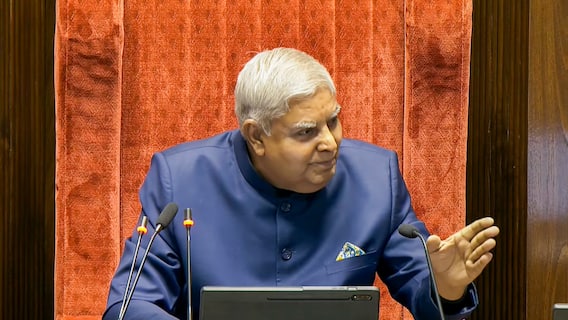Smoke From Canadian Wildfires Blankets Eastern US, New York For Third Day. What We Know So Far
US Pollution: New York residents continued to choke under a thick cloud of smog and an orange haze shrouded the city. In this article we decode what led to this situation in the US.

For the third consecutive day, millions of people in eastern US, including New York, woke up to hazy skies as a thick cloud of smog continued to blanket the region.
Smoke from wildfires in Canada have turned the sky in New York city an apocalyptic orange. The city's famous skyline became almost invisible on Wednesday as smoke blanketed the landscape.
In fact, on Wednesday morning, the pollution level in New York city was highest among significant cities worldwide, even surpassing New Delhi.
Weather forecasters expect hazy weather to continue in New York through the rest of the week. AccuWeather said air quality will continue to be "very unhealthy" through the rest of the week.
How Did The Canadian Wildfires Start?
Throughout May, much of Canada has experienced record heat and drought. Dry, hot weather also leads to more lightning.
In a normal season, half of Canada's wildfires are started by lightning, accounting for more than 85 per cent of wildfire destruction. The other half are human-caused -- from discarded cigarette butts to sparks from passing trains.
This time, authorities are finding it difficult to combat the fast-spreading fires amid harsh weather conditions. In fact, in late May, Canada experienced its hottest day ever when Lytton, British Columbia hit 49.6 degrees Celsius.
More than 400 blazes burning across Canada have left 20,000 people displaced. According to the Canadian Interagency Forest Fire Centre, 414 fires are burning in Canada and of them, 239 are considered "out of control", NBC News reported.
Firefighters and experts from US, Australia, New Zealand and South Africa have been deployed to help fight the fires.

Why Is The Smoke Reaching So Far Away In The US?
Smoke from fires in Canada have been drifting into the United States for weeks. While its common for strong winds high up in the atmosphere to transport smoke long distances, this time a confluence of events has led to the smoke blanketing major US cities.
"In Canada, air is circulating counterclockwise around a low pressure system near Nova Scotia. That sends air south over the fires in Quebec. There the air picks up smoke, and then turns east over New York state, carrying smoke to the eastern seaboard," AP quoted Bob Henson, meteorologist with Yale Climate Change Connections, as saying.
Joel Thornton, professor and chair of the department of atmospheric sciences at the University of Washington, told AP that the timing of this weather patterns overlapped with a situation that was ripe for large fires.
What Is The Situation In New York And Other US Cities?
On Thursday, New York residents continued to choke under a thick cloud of smog and an orange haze shrouded the city. Smoke in major areas, including Boston, Philadelphia and Washington DC, continued through Thursday. Cities like Baltimore, Hartford, Providence and Montpelier, Vermont also reeled under poor air quality.
Visuals showed people donning N95 face masks, largely abandoned since the Covid pandemic subsided.
The 'Code Red' alert has been extended in New York and is in place for a third day as the air quality reached hazardous levels.
On Thursday, New York City ranked fourth among major cities worldwide for the worst air quality. On Wednesday, the air quality reached a "hazardous" level of 484, the worst since the 1960s, according to Mayor Eric Adams.
Detroit was also among the top 10 most polluted cities, as per IQair rankings.
Most New York schools have cancelled outdoor activities because of the air quality alert. The situation has disrupted daily life, with people avoiding outdoor activities, flights being delayed, and a resurgence in remote work.
Relief may come later this week as a cold front is expected to move south over the next few days, pushing smoke farther south and east, CNN reported.
Trending News
Top Headlines





























